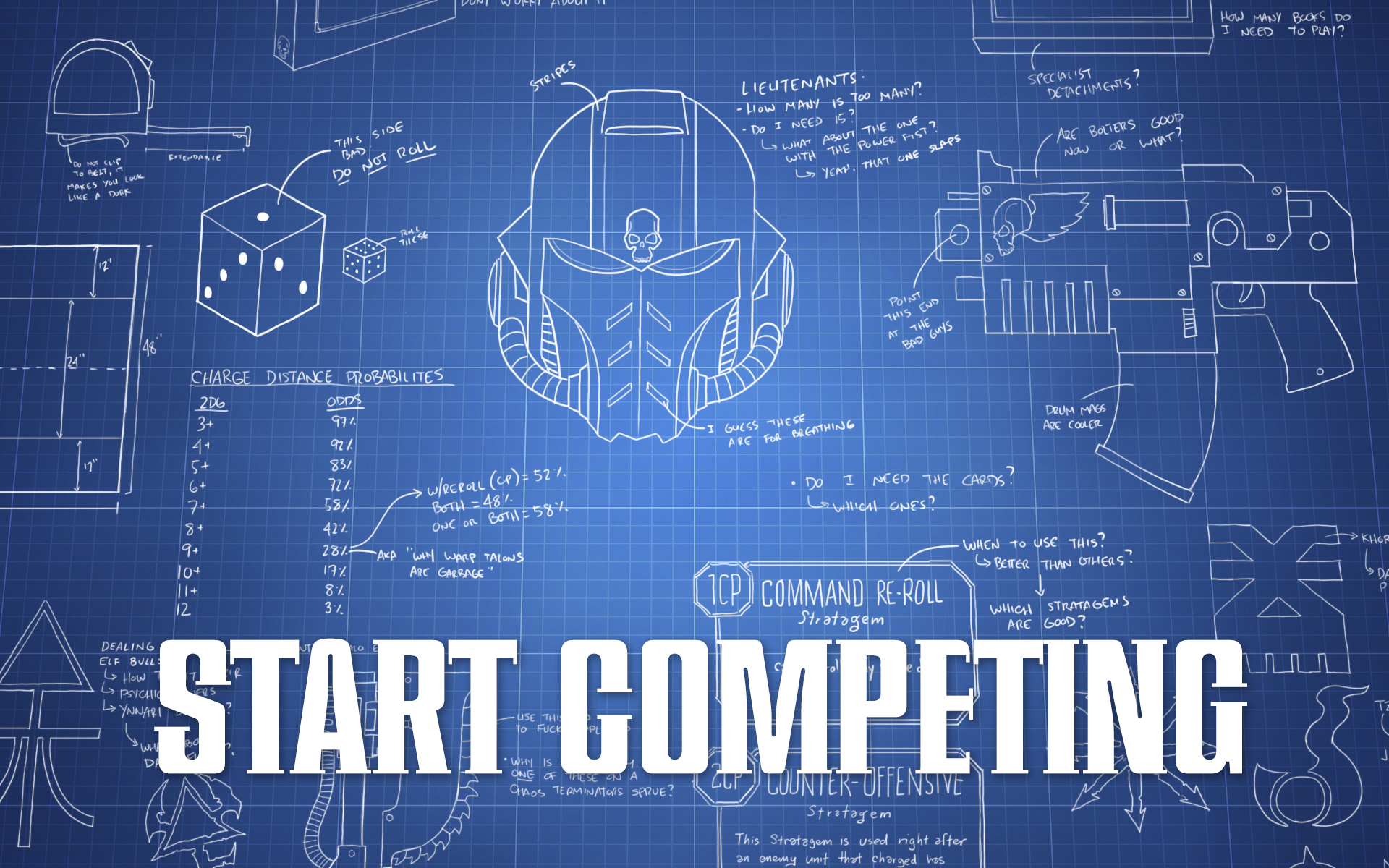Most tournament games of 40K play out over six turns, but not all of them are created equal. In turn one both players’ armies are going to be at their theoretically most powerful – completely undamaged for the player going first and (hopefully) mostly intact for the player going second. That makes the first battle round tremendously important and you want to ensure that you get the most out of it that you can, while denying your opponent the chance to do the same. Luckily you have an opportunity to set the stage on which the first turn will play out when you deploy your army, and today we’ll talk about how to use deployment to optimise your chances of a strong early game.
There’s a huge amount we could talk about here, but in order to structure this article we’re broadly going to look at deployment on three levels, in an order which I think broadly mirrors how people tend to pick this up as they play more tournament games.
In cut-throat environments with high-powered lists, it’s not an exaggeration to say that you can out-and-out lose a game with bad deployment, so the first thing we’ll talk about is how to deploy to minimise your opponent’s chance to take you straight out of the game if they get the first turn. After that, we’ll think about the opposite – how to plan your deployment to maximise the chances of your first turn going gangbusters, and meeting your goals. Finally, we’ll zoom out and think on a more strategic level about how you can use deployment to shape your game plan.
Mostly the focus of this is going to be on generic principles for how to deploy, but some armies have some special abilities that can complicate things, most notably Genestealer Cults and the various flavours of Aeldari. We’ll call out the fundamentals you need to be aware of with these in the relevant sections, but if you want to know more you should look at our Start Competing guides for those factions.
Step 1 – Denying Your Opponent
The first thing you need to start getting right with deployment in competitive games is avoiding letting your opponent run hog wild all over your army on turn one. In some ways it feels weird that this is more important than deploying to support your own plan, but I do think it’s the key first step. When you go second, you’re almost inevitably going to have to at least somewhat respond to whatever your opponent has done, and getting to that point with your army as intact as possible is going to give you more chances to fully participate in games than planning out an intricate roadmap for your first turn that falls apart if 30-50 feral Orks get amongst your line with an advance and charge.
When deploying, you want to think about three things when considering your opponent’s deployment and hypothetical first turn.
- Deny them information.
- Outrange their offence.
- Protect your key units.
Deny Them Information
While there’s an increasing trend towards “full army” deployments, half of the ITC missions still use “alternating” deployments, and this gives you your first opportunity to start messing with your opponent’s plans, especially if they have fewer units in their army than yours. Until you place a unit on the board, your opponent can’t fully plan around it, so the later in your deployment you can hold back a “key” unit, the more decisions your opponent is going to have to make without knowing exactly where it’s going. If your opponent has substantially fewer drops than you then they have a good chance of winning the first turn roll off, but as a trade off for that you get to place your last few units with perfect information about how they’ve deployed, and without them being able to respond to how you deploy them (outside of special abilities).
To help exploit this to the max, a really easy thing to start doing is to start deploying the stuff that gives your opponent the least information first. In general, this means units that are either going into deep strike, are highly mobile, or you are definitely putting in a fairly obvious and difficult to exploit position.
Deep Strike stuff is pretty self explanatory – unless the very fact that you’re putting things into Deep Strike is a surprise, do this first. It commits nothing to the board, and if your opponent has fewer Deep Strikers than you it forces them to start committing to some sort of plan or structure more quickly.
Highly mobile or otherwise flexible units are next on our list, with my beloved Aeldari planes being the best example. Unless I’m specifically using these as a redeploy screen (see the next point) they’re almost always going somewhere along the back line of the board, either evenly spaced on a full edge deployment or in a corner on quarters. If my opponent is experienced in the matchup they probably know this, so putting these down early on doesn’t really shine any light on my overall plan.
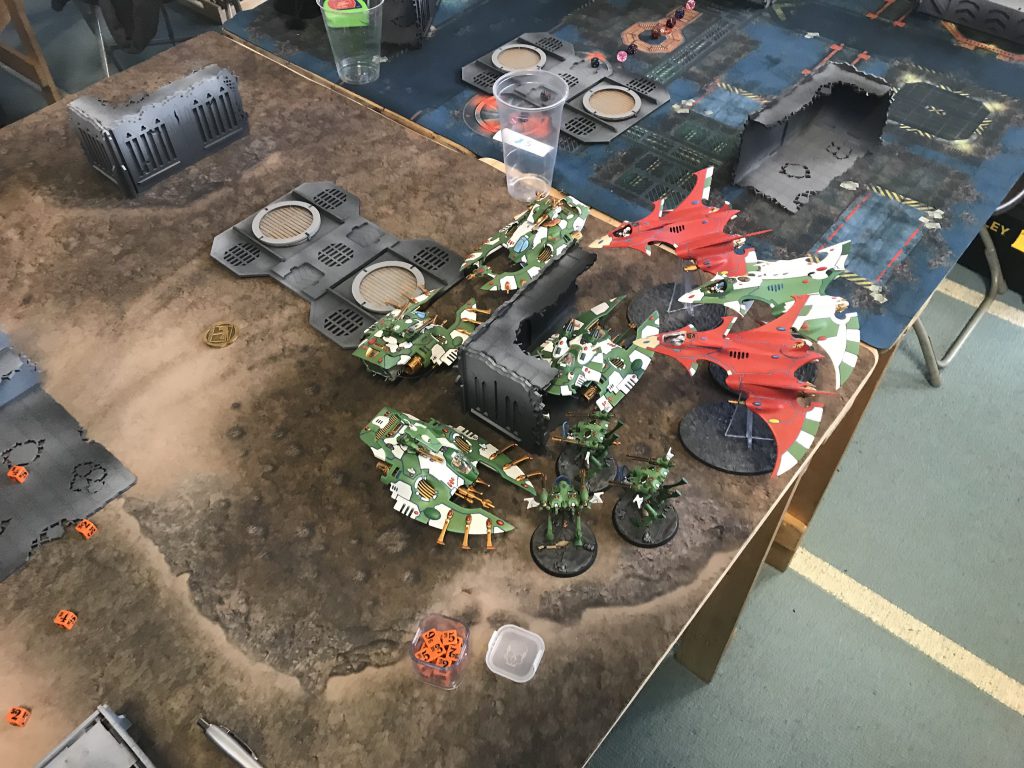
Finally (and something you can also see elements of in the above photo) placements of “static” elements of your army can also be pretty obvious. In the three ITC missions where you place or move objectives, you’ll get to choose where one goes in your deployment zone, and it’s going to be pretty obvious that you’re going to slap at least one unit down on that (often an artillery piece or backline character). This, again, is something you can afford to do pretty early on, as it isn’t going to be a great surprise to your opponent or change their plans much.
Abilities such as Phantasm and Rapid Redeployment (both of which let you redeploy units at the start of battle round 1) also give you an extra option here. If you’re willing to commit to spending the CP on them, you can choose to place some of your units down in a completely arbitrary position that betrays nothing of your ultimate plans for them. This does come with a cost, but it’s an effective way to deny your opponent information in games where you have fewer drops than them or are doing “full army” deployments. It wouldn’t especially surprise me if the ITC swung further towards full army deployments in a future update, so this option will potentially become even more important.
Outrange Their Offence
Most units in 40K can’t just do their thing anywhere at any time. Instead, their offensive output usually has some sort of range limit. For a shooting or psychic unit, this is their weapon/power’s range plus whatever distance they can move and still use it. For a melee unit it’ll be their movement plus their maximum possible charge plus an advance or an additional move if they have access to abilities that let them do these and still charge. We tend to refer to the maximum range at which a unit can successfully attack you in the way it wants to as its “threat range” or “effective range”, and you want to be making sure that when you deploy you are outside of this for your opponent’s best units.
This is pretty easy to do a lot of the time – it involves having a good read of your opponent’s army list, asking questions and doing some measuring. When you go through an opponent’s list you should make sure you have at least a rough idea of what each unit does, either by being pre-familiar with it or by asking. Once you know that, you should hopefully be able to sift out the stuff that’s likely to really ruin your day, and start asking more precise questions.
Consider that your opponent has a Lord Discordant in their army.
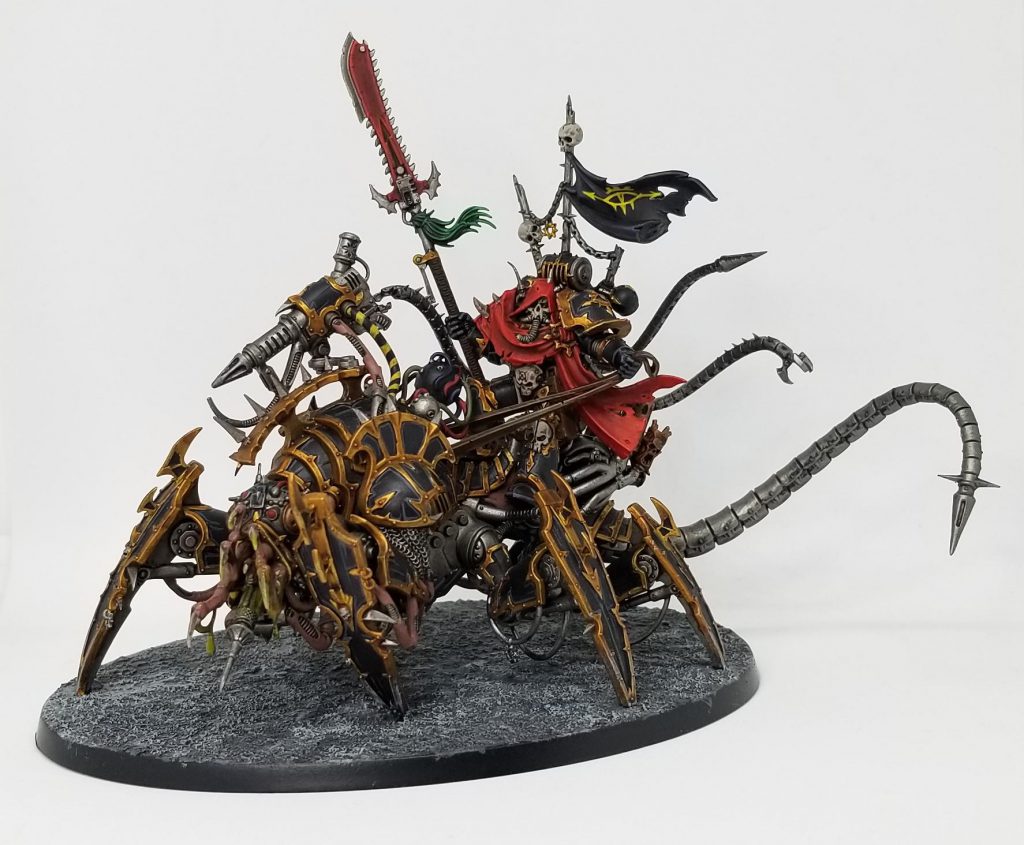
The Lord Discordant is a terrifying melee monster that will ruin the day of pretty much anything it touches. We really do mean anything here – as part of some work for Hammer of Math recently Kevin modelled out what a Lord Discordant with the maximum set of buffs can do, and it turns out they can comfortably drop-kick a Warhound Titan (a 2,000pt model) into the sun in a single round of combat. It is bad if it gets to touch your stuff, is what we’re saying, so how do we avoid that?
Well, step one is asking “how far can it move and charge?”. Discolords have a move characteristic of 12″, so adding that to the maximum possible charge of 12″ gives us a 24″ total threat range, so as long as we deploy 24.5″ away from them we’re good right? If they haven’t been placed on the board yet, we can instead just make sure that anything we deploy is >24″ away from any part of the opponent’s deployment zone, thus guaranteeing that they can’t reach us, wherever they’re placed. Right?
Wrong, sadly, because Discolords have some tricks up their sleeves! Once you know what the baseline threat range of a unit us, you then need to delve into any abilities they have to increase it. Discolords have a few very commonly used ones they get access to via the Soulforged Pack specialist detachment. This gives them access to a Warlord Trait for +2″ movement and a stratagem for advancing and charging (which they can also get by being Red Corsairs). This adds 8″ to their possible threat range, so suddenly safety lies 32.5″ away from them rather than 24.5″. For melee units in particular, a standard part of reviewing your opponent’s list and asking questions about it should include “does it have any way of advancing and charging” and “can you increase its move”. Don’t forget that things getting out of a transport on the edge of a deployment zone also add 3″ + the width of their base to the distance they can strike at.
All of these things need to factor in to how far away you need to keep your units. If you’re specifically deploying to be a precise distance away, it’s also worth explicitly showing your opponent how you’re measuring it out and making your intent clear. If you’ve very carefully demonstrated that your precious Knight is 32.5″ away from the mean old Discolord during deployment and the table gets knocked and half the terrain falls over mid way through turn, moving a bunch of models, you can confidently assert that your stuff was definitely out of charge range.
If you can deploy completely outside the range of everything your opponent can do turn 1 then things look pretty great for you, but that obviously won’t always be the case. As experienced Discolord fighters have no doubt been mentally screaming out since I closed the last paragraph, their maximum threat range with a Soulforged Pack isn’t actually 32″. Thanks to the Warptime power letting them move and advance a second time, the actual maximum threat is more likely to be 52″. This presents a bit of a problem for the denial strategy, as 52″ is an impossible distance to deploy away from your opponent most of the time. My general rule of thumb is that 36″ threat ranges can be plausibly dealt with on most deployments, but anything more than that starts to become dicey, and a 48″ threat range is generally an upper limit of when you can ever completely avoid it. If your opponent can present a threat range that you can’t stay outside of, what can you do?
Defend Your Key Units
Sometimes you can’t fully dodge your opponent’s threat range, so you instead have to use other methods to keep your most important assets intact.
Against shooting threats the most obvious way is just to stay out of line of sight (LOS), or failing that, in cover. Many tournament tables use a good number of LOS blocking pieces that can shield your units from enemy shooting, and putting your most important units behind these will protect them (just make sure they, themselves, can take up firing positions on your turn). This also often works against psychic threats, as a lot of offensive powers need LOS.
Shooting AIRCRAFT need special handling. Because they can go anywhere you can’t outrange them, and if you’re not careful they’ll fly behind your characters and shoot them to death. Make sure you wrap any vital characters from all angles. Troop transports are a particularly good tool for this, as if your opponent manages to pop one the infantry inside can get out and replace the screen.
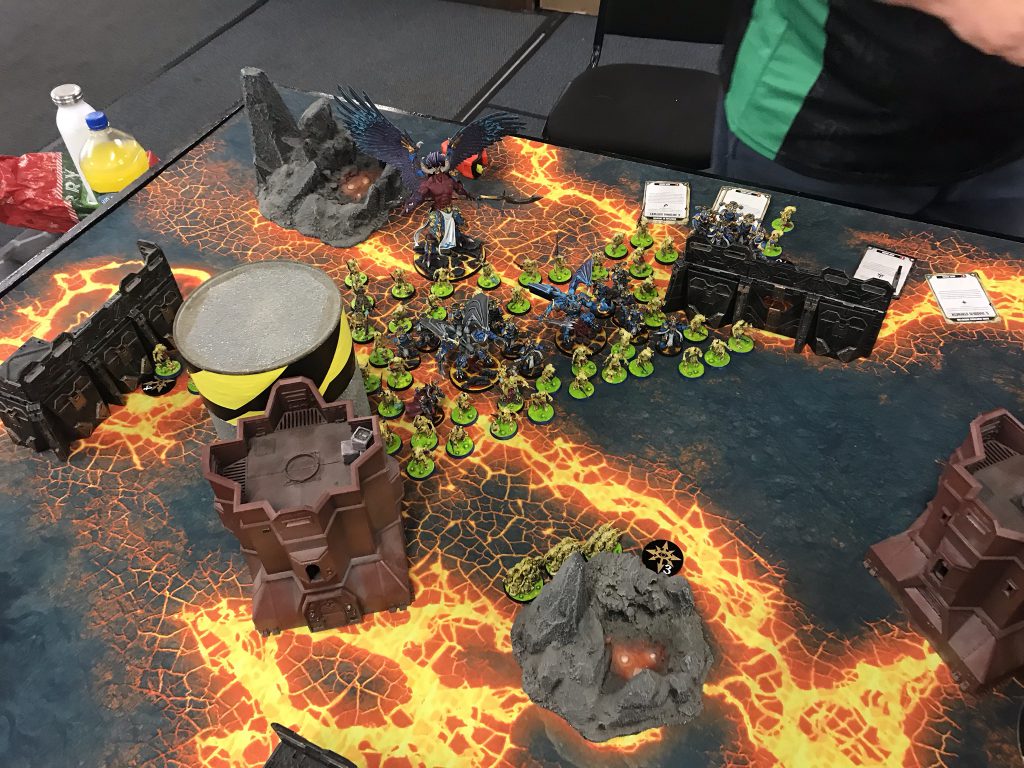
For melee units with high threat ranges, you instead just need to physically obstruct them getting to you. This is where some cheap screening units can come into their own – a Lord Discordant can go as fast as it likes, but a thin net of expendable infantry will stop it in its tracks unless there’s a way round. Sure it will brutally murderise pretty much any squad that you use in this role, but better that than a precious vehicle. This can also be effective as a strategy against Smite spam lists like Thousand Sons – a line of stuff you can afford to lose out front can blunt their early offence.
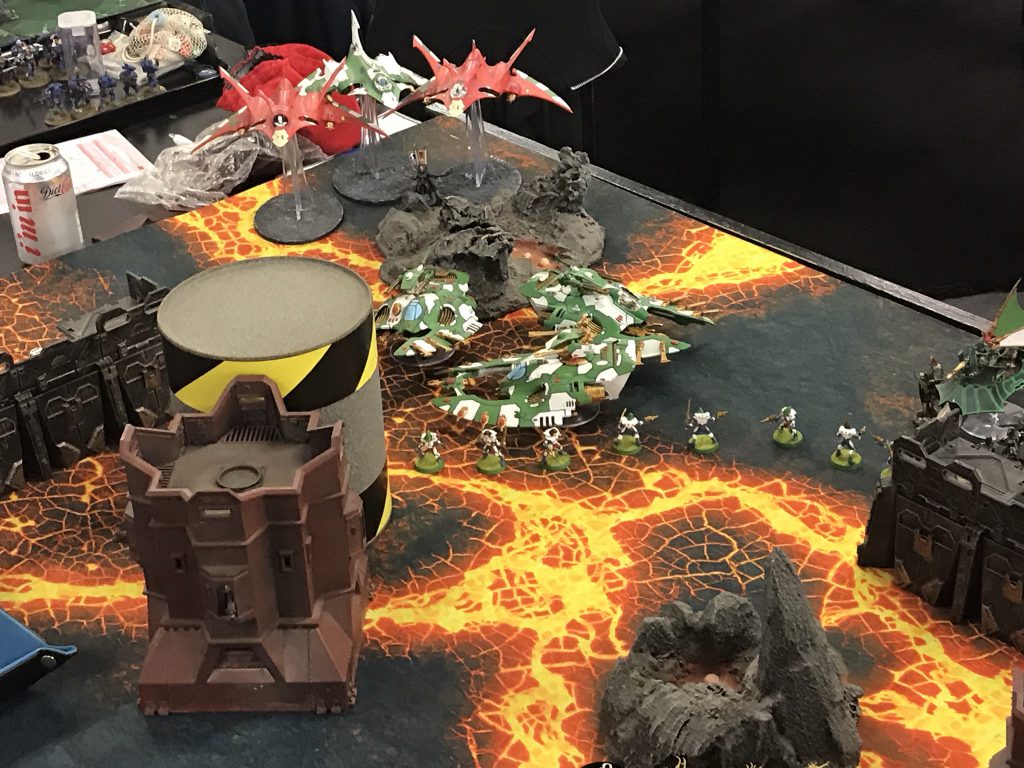
For melee threats, your opponent might also just not bother coming after you if they’re going to only impact onto something expendable. A Discolord can shuffle 52″ in a turn, but if all they’re going to do is murder some random infantry then get immediately killed on the counterattack a wise opponent probably won’t bother. Outright denial might not be possible, but discouragement could be.
The final category of things we need to deal with here are redeploy/summon abilities. These abilities let a unit be taken off the table and re-appear in a similar manner to Deep Strike on the first turn, usually showing up anywhere more than 9″ away from your units. Establishing whether your opponent can do this is another thing you should be doing during list review, as it can again shape how you need to deploy. The most common ways to do this in the metagame are:
- Da Jump from Orks
- Master of Ambush from Raven Guard (especially watch out for this one, as they get to move after it)
- Dark Matter Crystal from Thousand Sons (if your opponent’s army has a unit of 30-ish Tzaangors, they’re probably going to use this)
- Telepathic Summons from Genestealer Cults
- Upon Wings of Fire from Blood Angels
There are plenty of others, but we can’t list them all – just ask if your opponent can do this.
If they can, you need to make sure that you don’t get destroyed by it. Redeploying gives your opponent’s unit a functionally unlimited threat range, so the only way to keep your best stuff safe from it is usually to make sure you have a screening layer of less important stuff as an outer screen. Just like with powerful melee threats, this can sometimes discourage your opponent from pulling the trigger on the ability at all, as if they aren’t going to get something good, it might not be worth doing. For melee threats that needs to be balanced against the risk of them doing a “wrap and trap” (charging and piling in such that they don’t kill a unit, just lock it in combat, preventing you from falling back or being able to shoot at the unit on your turn), and if you have stuff you don’t mind screening with that can also escape combat (usually via the FLY keyword) that’s a good choice.
As a final point for this section, if the redeploy threat you’re screening against is a melee unit and you have AIRCRAFT, you can sometimes make it completely impossible for them to get to you. If the “outermost” units in your deployment are planes, you can screen out 9″ bubbles behind them without something that drops in on the far side being close enough to threaten a charge. Three planes is usually what you need to pull this off – it’s easiest on corner deployments, but can be done with care on most others as well (only Dawn of War is a real struggle to make it work on).

Step 2 – Opening Strong
Not getting destroyed by your opponent right off the bat is definitely an important first step, but it’ll only get you so far. If you don’t have plans of your own to take the fight to the enemy and start scoring objectives all you’ll be doing is delaying your defeat.
As with the first section, I think we can broadly break out three key principles to consider to give you a strong start in the game. These are:
- Line up your offence.
- Make sure you can reach “target” objectives.
- Support your units.
Obviously things are now a bit more complicated, because we’re trying to optimise towards two different goals and they’re sometimes going to be in conflict. We’ll talk about how you might want to balance these depending on the matchup in the third part, but as a general rule of thumb I’m aiming to deploy in a fashion that’s as optimised for my game plan as possible within the constraints of avoiding my opponent’s biggest swings.
Line up your Offence
In section one we talked about deploying to minimise your opponent’s impact on you in the first turn, so it makes sense that you want to try and work around their efforts and maximise the extent to which you’ll be able to use your own tools. Think about your units’ threat ranges and what their early targets are likely to be and deploy them accordingly, especially if your opponent has already put some of your priority targets on the table. Range isn’t the only thing to consider – for long-ranged units you should be aiming to put them somewhere where they have a wide variety of sight lines available after a move. This will give you more options for how to use them, especially if you go second and your priorities have changed from what they were when deploying. You need to think about similar things when deploying large-based units that can’t enter terrain. If possible, deploy them so they have lots of possible places to move, and to where it’s difficult for your opponent to block them off with an infantry screen, as this can massively blunt their impact on the game.
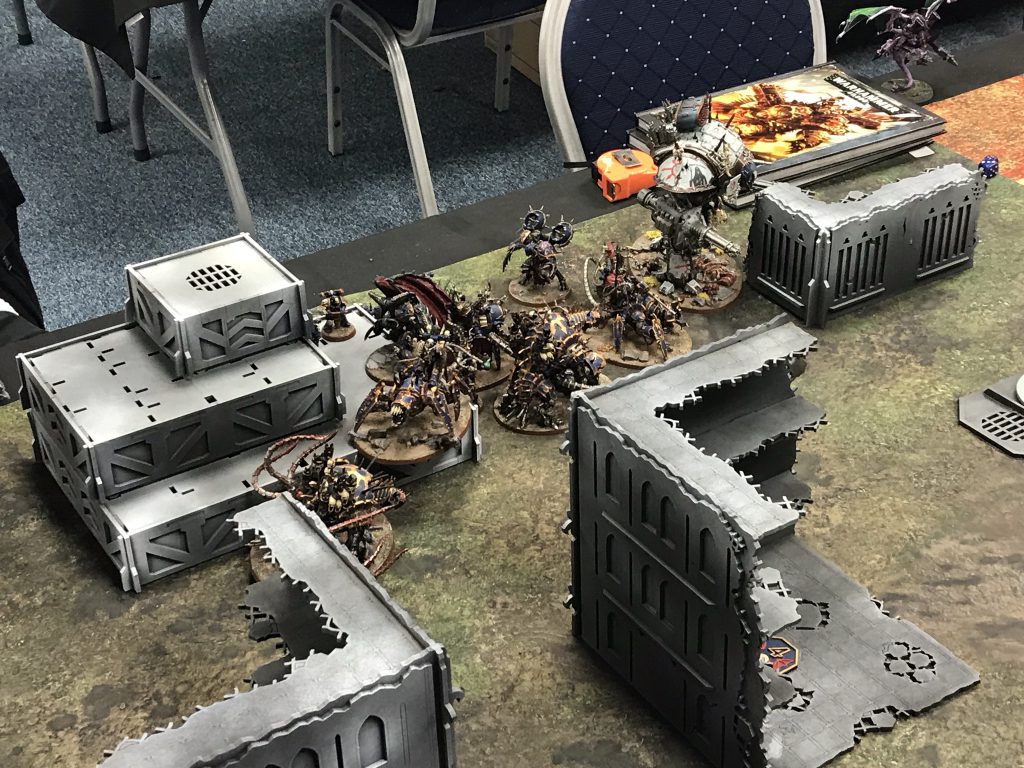
This is another place where you can make good use of redeploy stratagems – by deliberately deploying a powerful shooting unit some distance back from the edge of your deployment zone, you can sometimes bait an opponent into placing their models close enough that you can Phantasm/Rapid Redeploy into range, letting you mercilessly crush them on a first turn. This can also enable you to re-configure to offence if you successfully seize the initiative in a “full deployment” mission.
Sometimes a lot of this is academic – if you’re playing an offensive horde list that wants to push straight down your opponent’s throat and you aren’t afraid of them pushing at you, then just lining up your troops at the front of the deployment line is going to be a pretty safe strategy. A wily opponent might deploy in such a way as to make you think harder about it though, so don’t end up doing this on “autopilot” – always make sure you’re not missing an opportunity to pile on the pressure!
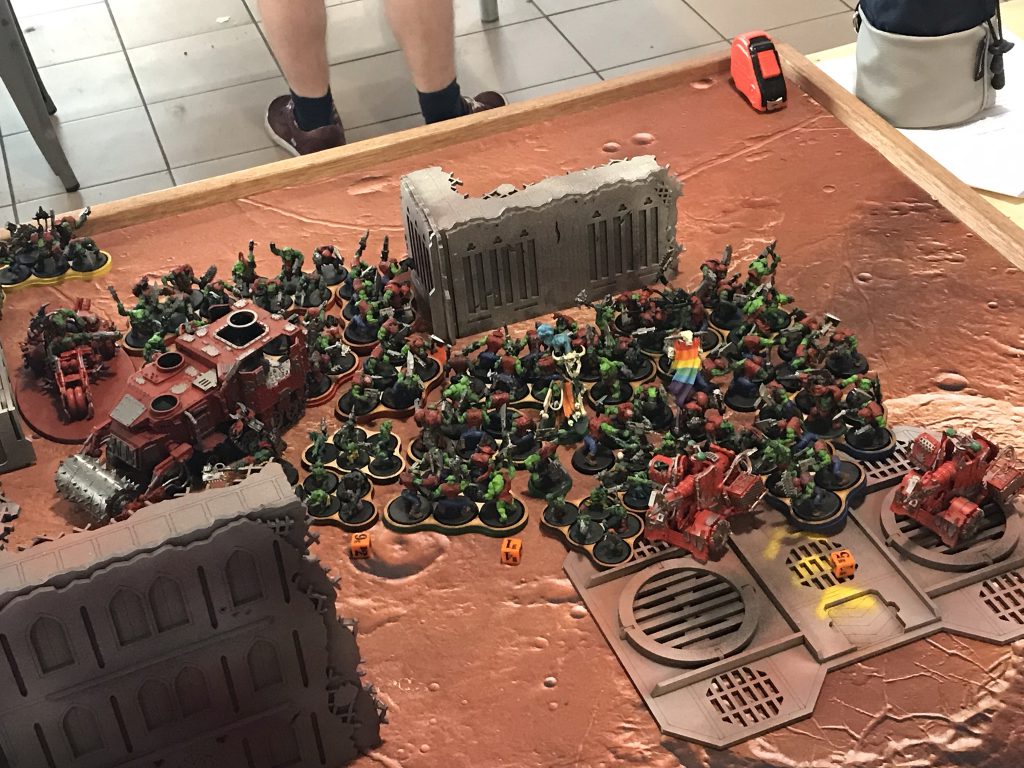
Go for Objectives
If you’ve read our article on ITC Primary tactics you hopefully have a good grasp of how many objectives you need to be planning to seize in the first turn in your matchup, and whether pushing for an early bonus is worth it. You need to make sure you don’t deploy so defensively that you can’t contest the board, and are all set to go out and claim the ones you need. It’s especially worth going after any that it doesn’t look like your opponent can easily defend.
If you’ve read my recent battle reports you’ll often see one Wave Serpent deployed much more aggressively than the rest of the army on a different flank – this unit is a dedicated objective grabber, and it’s often been placed ready to go out and grab one, especially if I’m playing on ITC missions 3-5 where a strong thrust can start claiming hold more and/or the bonus very early on.
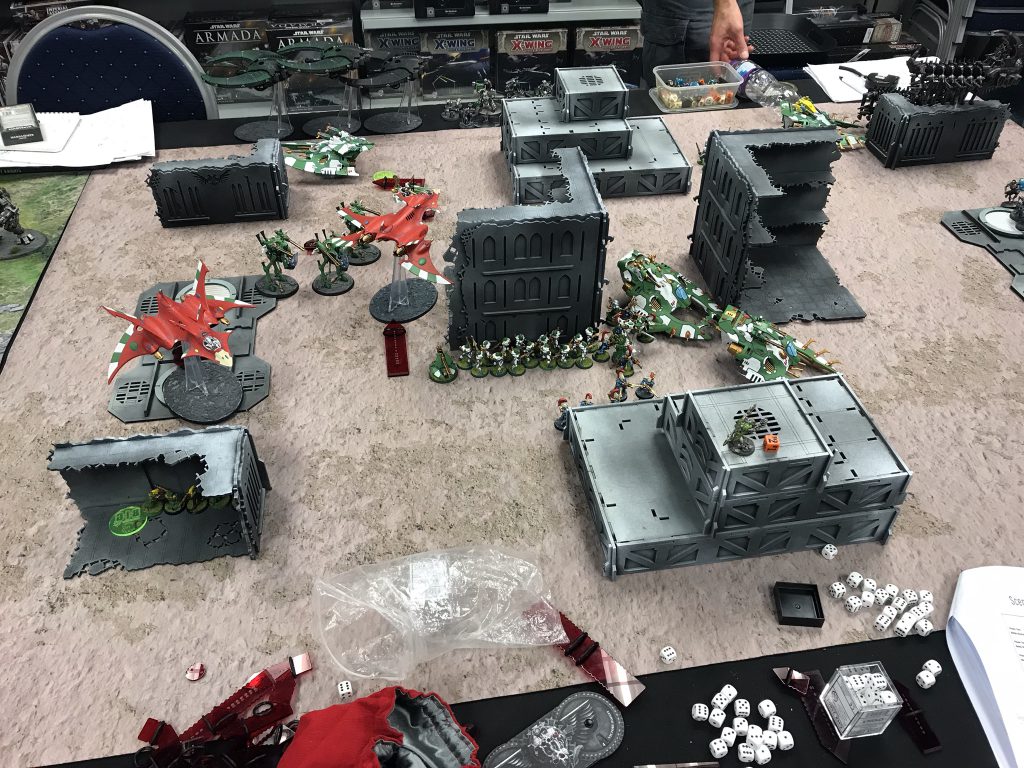
This is a good example of where you might to override prioritising defence, if the risk is worth it. With a Wave Serpent it usually is – it’s fast and can easily get out of trouble if plans change, it’s expendable enough that it’s not game ending if it just gets killed, and it’s tough enough that an opponent will have to commit substantial force to take it out, which might undermine their game plans.
There’s nothing more agonising than realising the only reason you aren’t taking hold more for a turn is because you’re an inch short of taking an objective, so when you’re setting this up make sure you measure when deploying. It’s particularly important to be careful with this, because you might not want to flag your battle plan to your opponent by agreeing a pre-measurement, so err on the side of being generously within range to make the move you need.
Sometimes this doesn’t just cover the first turn. If there’s an especially good hiding place near an objective, it can be worth keeping a cheap unit there ready to take and hold it on a key turn where it will tip the balance of who holds more in ITC. This can include chucking a cheap unit into Deep Strike if you have nothing better to do with them, ready to grab an objective mid-game once it’s clear where on the board is safe. While we’re talking about ITC, all these same principles apply to making sure you can score Recon or Engineers!
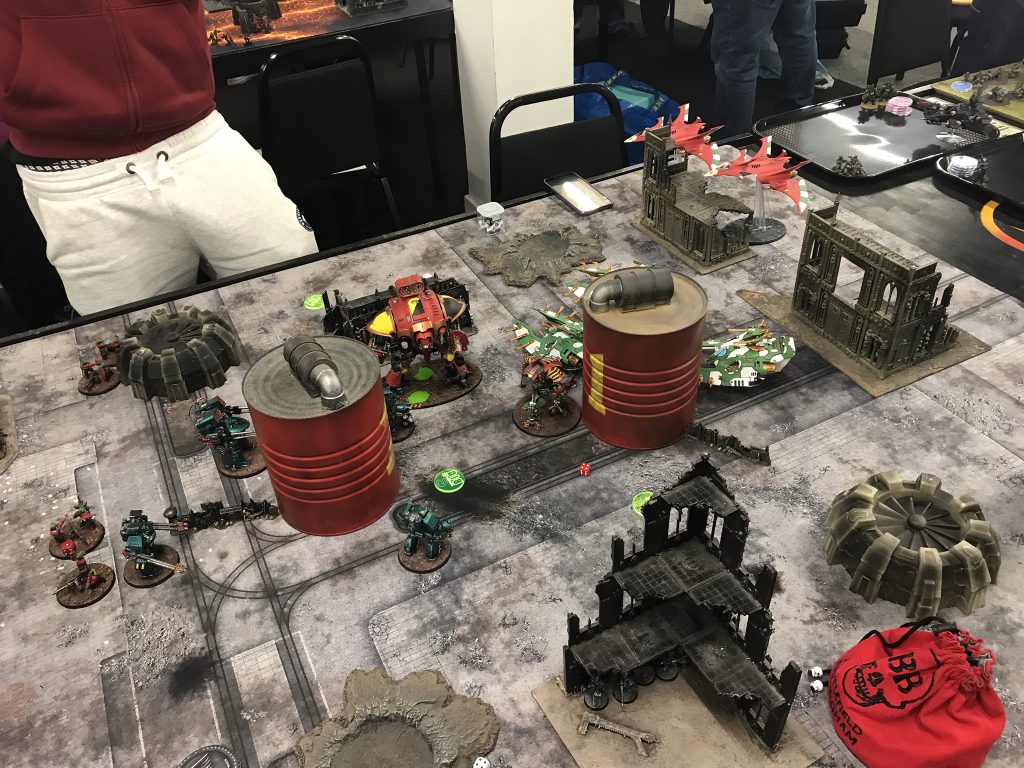
Make sure you aren’t losing too much by doing this though; only the cheapest units should be doing nothing!
Support Your Units
Your units probably work best when they work together. 8th is chock full of aura abilities and other buffs that boost up units within a limited range, but even if your army doesn’t have effects that directly augment nearby allies, units that are close together still support one another. Nearby allies can usually bring the full weight of their ranged weaponry to bear against an enemy that goes for a close assault, can threaten a counter charge and can provide screening – all of which can change the maths for your opponent as to whether it’s worth attacking you, and help punish them if they go for it anyway.
Plan for both of these things! A huge number of 8th edition armies lean on powerful buffs to throw their biggest punches, so make sure your units are ready to get into position and benefit from them. Some of these need especially careful setup like Kau’yon in Tau, so need some serious strategic thinking to make sure all the units are overlapping in the right bubbles.
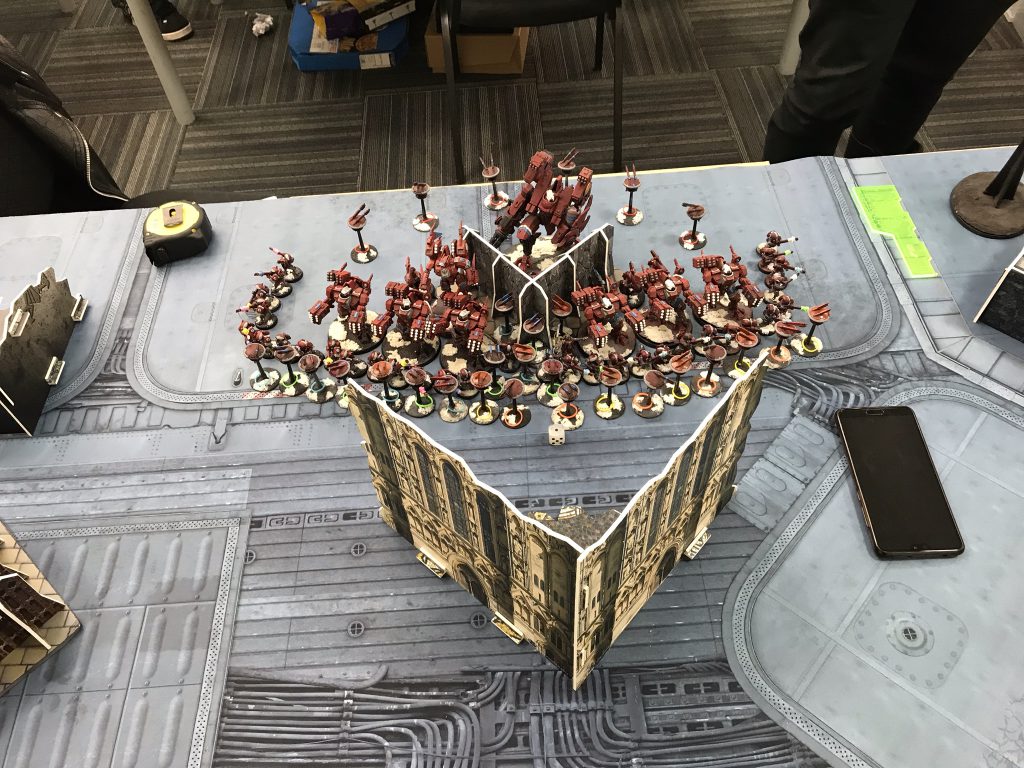
As well as doing this positively, make sure you’re not neglecting any units that you can’t afford to. As already discussed it’s sometimes correct to have one or more units strung off from the rest of the army, but this needs some sort of plan behind it. Just leaving a unit out to dry by itself makes it very easy for your opponent to pounce on it and take it out without really suffering any consequences. Given “inflict consequences on your opponent” is pretty much always part of your game plan in 40K, you don’t want that to happen.
Step 3 – Strategic Considerations
We’ve sort of built up to this a bit by talking about how to support your units. Most of the points before that were covering things you needed to check or consider on a per-unit basis, but games of 40K aren’t won by individual units in one turn (unless you own a Tau’nar), they’re won by armies . Army level strategy is obviously a topic with almost infinite depth and we can’t cover it all, but there are two points that I think we can easily look at as a gateway to how deployment factors into this. These are:
- Accounting for the first turn
- Planning for the flow of the game
Accounting for the First Turn
Note: This is particularly tailored to ITC missions. The principles within can still be applied across to other ways of picking the first turn.
Thus far we’ve mostly not looked at a really important aspect of the first turn – when you’re deploying, you usually know who’s more likely to have it. In alternating deployment the person with fewer drops has ~60% chance of getting to pick who goes first, while in non-alternating deployments there’s either a one in six chance of the player deploying second seizing or, if they chose to deploy second, basically a guarantee that they’re putting you on the first turn.
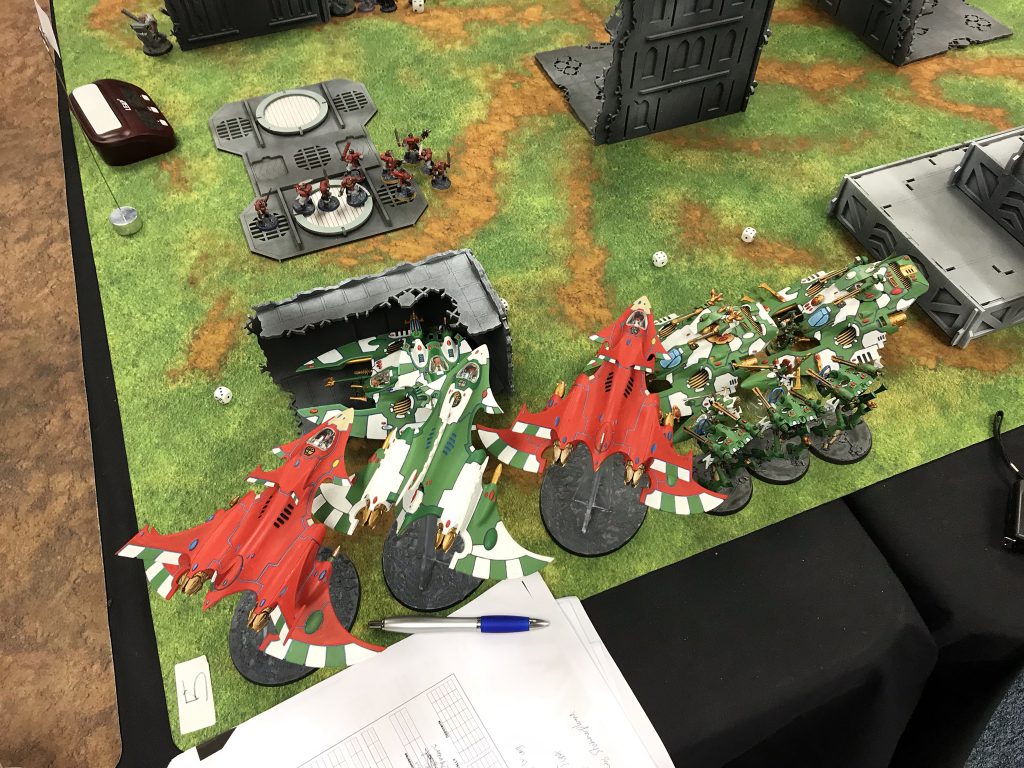
This allows you to apply much more nuance to balancing defensive and offensive deployment choices. If you’re sure your opponent wants to go second, they’ve made you deploy first and you still want to push your army right at them then you can go wild – deploy as aggressively as you like because the risk suddenly isn’t there. When alternating deployment is in play and you think both players want the first turn, or if you think your opponent might try and seize, the balance is a bit finer.
In general, my principle here is that:
- If I’m more likely to have the first turn: Deploy as aggressively as possible while still avoiding the most potent threats.
- If my opponent is more likely to have the first turn: Deploy defensively but with key offensive units in position to do something relevant.
This is something that redeploy stratagems make massively easier and is why they’re so good, because they mitigate a lot of the risk. Using the Phantasm stratagem, rather than the above, I can instead:
- If I’m more likely to have the first turn: Deploy 3 units full on aggressively, and Phantasm to safety if I lose the roll.
- If my opponent is more likely to have the first turn: Deploy completely defensively and bring three key units (often loaded transports) forward if I win the roll.
Ultramarines players are heavily experimenting with the former using Rapid Redeploy and Invictor Warsuits. They can deploy them right up in the opponent’s face ready to rampage turn 1 if the Ultra player wins the roll, but pull them way back to safety if they don’t.
Highly mobile units like planes also help with this as you don’t have to choose – you can deploy them defensively on the backline and they can still attack anywhere. Aren’t they great!
As you play an army you’ll generally get more of a feel for how much of a risk you can afford to take in this, and it’s definitely something that changes by matchup. Hopefully this section start you thinking about how it applies to you!
Planning for the Flow of the Game
The final thing to talk about today is something that flows directly from thinking about supporting your units. You want your units to support each other to work to the best of their abilities – and that means your opponent probably does as well. That means that once you’ve looked at their list and seen how they’ve started deploying, you can visualise what their game plan might look like assuming they want to have their units supporting one another – and counter it. Against some kinds of armies you don’t even need that – against pure Knights your opponent will often only have five drops, so you can see exactly where they’ve set up before you’ve deployed half your army.
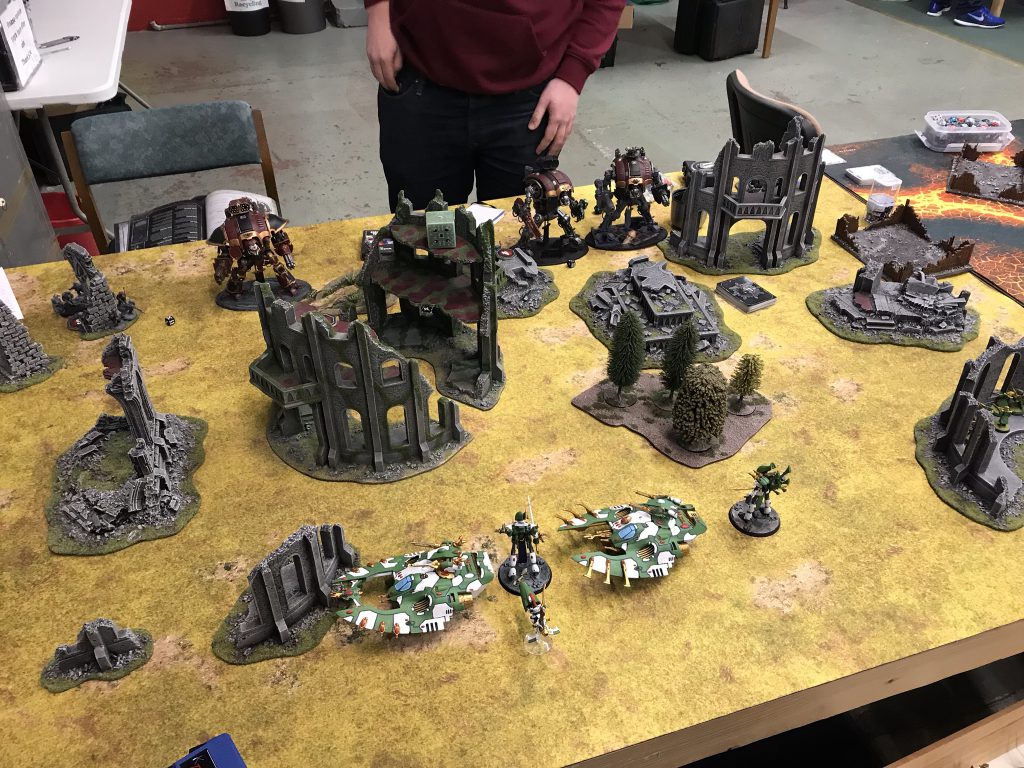
Either of these lets you assess what your opponent might do early on, and how you can best mitigate it overall, not just on a per-unit basis. The easiest way to start thinking about this is to re-use that Knight example.
Let’s imagine you’re up against pure Knights – four Questoris and an Armiger. Unfortunately for your opponent, you’re playing on Precious Cargo and Dawn of War, meaning that to have any chance of holding objectives, they have to spread out a bit. They place one Questoris and the Armiger on one side of the board, and three Questoris on the other, lining up against the few units you’ve got down already.
Luckily, you’ve been following our advice, and your first few drops have been pretty inconsequential – a couple of planes on the back line, one unit into deep strike and a few things you actually care about.
You now have a huge opportunity, because one of your opponent’s flanks is vastly weaker than the others. Knights get way more dangerous when you’re close to them because they’re melee monsters as well as deadly shooting platforms, and three Knights cross-supporting one another is a hellish nightmare land you don’t want to go to.
On seeing this, I would immediately prioritise stacking the rest of my drops up on the flank where the solo Knight and Armiger are. The cross support on that half of my opponent’s army is much weaker, and even though a Knight is still scary, if I bring my forces up in good order they should be able to smash it. That then leaves my opponent in a disastrous position – my forces are outside the ideal range of their other Knights, and they have to pick between coming after me as a group and maintaining support, or splitting up to try and contest objectives. Both options contain considerable risks – if they come as a group they risk losing on objectives if I manage to hold out, if they split up they might just get crushed piecemeal.
Once again, hammering home the idea that redeploy abilities are really good they make setting this up, or even feinting for it, very easy to do.
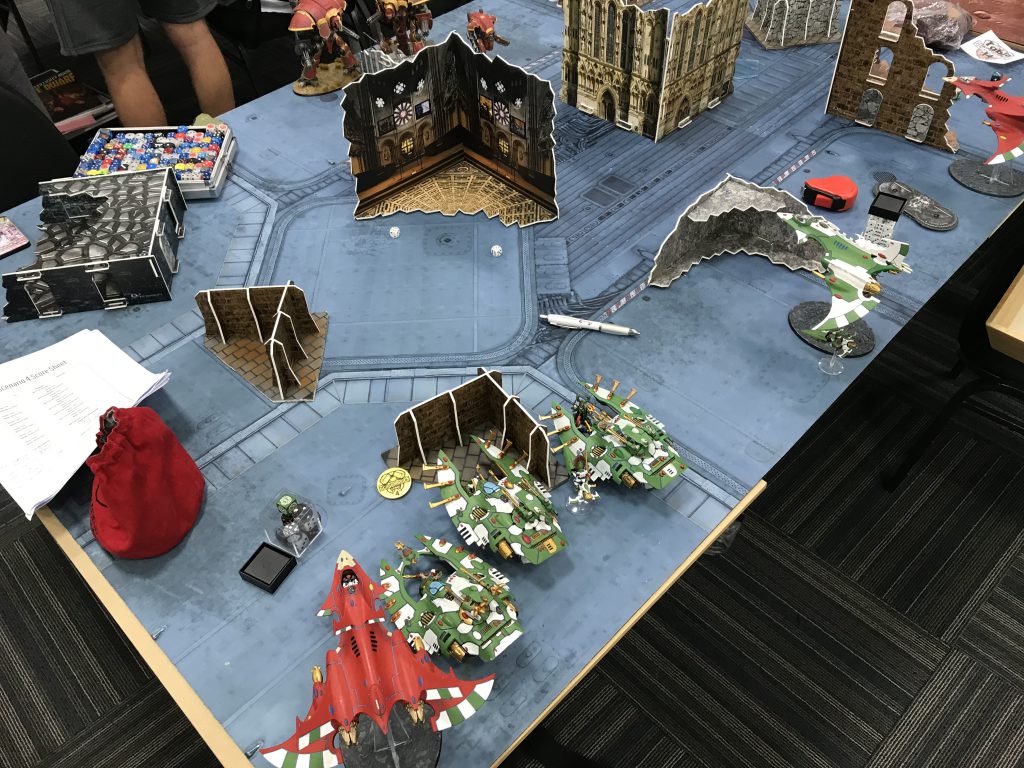
While this can be a positive thing, you need to make sure you aren’t letting yourself get boxed in. This is a particular risk on Search and Destroy or Vanguard Strike (quarter deployments) where you need to be wary of your opponent engaging you with mobile threats on all fronts. If you can’t break out and don’t want a close engagement you’ll get boxed in and destroyed – so make sure your deployment includes an escape plan. This might have to be smashing your way through one part of their army, which may not be ideal but remember – if you’ve deployed so that your units are all cross-supporting, they should be able to tangle with half the opponent’s army when they’ve split up.
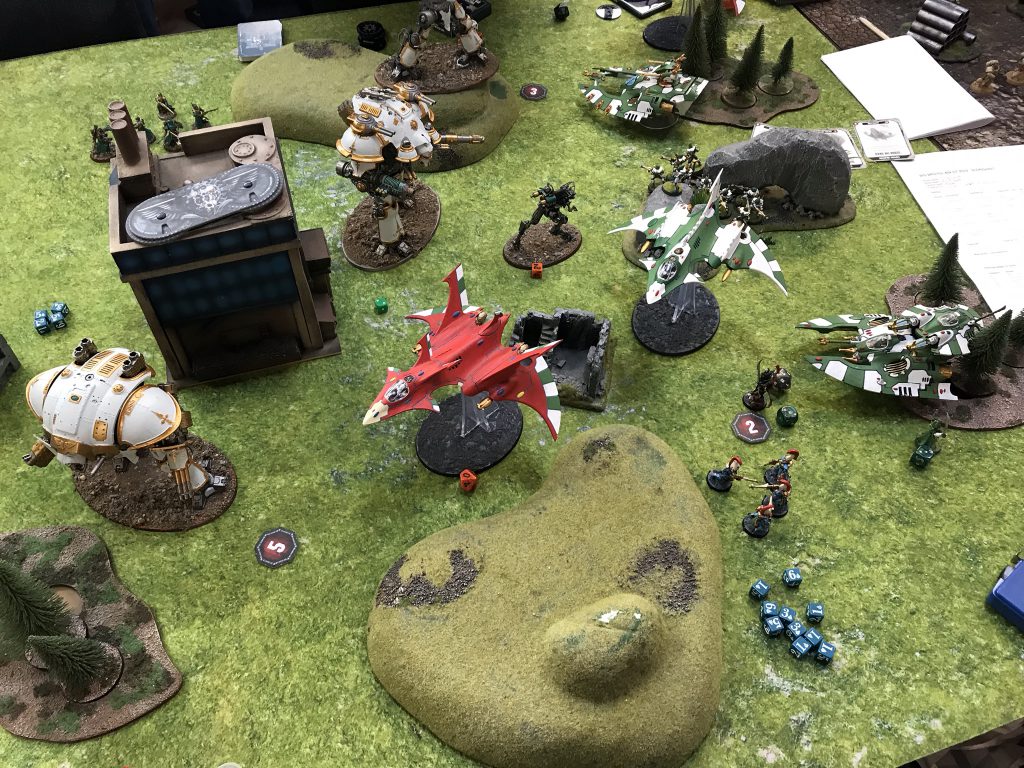
Wrap Up
There’s obviously a lot more we could say about deployment – every army has it’s own oddities and you could probably write entire articles about Phantasm or the deployment tricks Genestealer Cults bring to the table. Hopefully what we’ve covered here is a useful start, and I’m sure we’ll return to this topic in the future.
If you have any comments, questions, suggestions, long screeds about the deployment implications of magic boxes or any of the other wonderful things the online 40k discourse throws up you can reach us at contact@goonhammer.com or via our Facebook Page.
